- The Unexpected Magic of Boho Scandi: Why This Fusion Style is Taking Over Modern Homes - September 2, 2025
- Japandi Design: Why This Japanese-Scandinavian Hybrid Has Taken Over My Client Projects - September 2, 2025
- The Real Story Behind Transitional Interior Design: Why It Actually Works - September 1, 2025
Table of Contents
Look, I’m going to be straight with you. When I started doing interior design in 2009, I thought contemporary style was basically just buying everything from West Elm and hoping for the best. I was young, I was broke, and I definitely didn’t know what I was talking about. Fast forward fifteen years, and I’ve probably redesigned more living rooms than I can count. I’ve made every mistake in the book. I’ve had clients fire me. I’ve had furniture deliveries go horribly wrong. And through all of that, I’ve figured out what actually works when it comes to contemporary design.
Here’s the thing nobody tells you: contemporary isn’t about following some rule book. It’s about making spaces that work for real people who have jobs and kids and dogs and way too much stuff.
Modern vs Contemporary – Let’s Settle This Once and For All
Okay, so everyone gets confused about this. Modern design? That’s the stuff from the 1950s and 60s. You know, those iconic Eames chairs that cost more than your car payment, the geometric patterns, the whole “form follows function” thing. It’s cool, but it’s also frozen in time. Contemporary design is what’s happening right now. It changes constantly. What I was doing for clients in 2010 looks nothing like what I’m doing today. And honestly, what I’m doing today will probably look dated in ten years, and that’s perfectly fine.
I had this client in 2008 who was obsessed with those really angular, super geometric furniture pieces that were everywhere at the time. She spent a fortune on them. Fast forward to 2018, and she called me crying because her house looked like a museum exhibit. We ended up starting over completely, which taught me that chasing every trend is a recipe for expensive regret.
What I’ve Actually Learned Works
The Whole Clean Lines Thing
Here’s what I wish someone had told me when I started: clean lines don’t mean everything has to look like it belongs in a space station. I learned this the hard way on a project in Manhattan where the client wanted everything white and angular. The end result looked like a very expensive dentist’s office. Clean lines are about being intentional with every element having a purpose. That fancy decorative molding that serves no function? Skip it. That coffee table with seventeen different geometric cutouts? Also skip it.
I’m working on this house in Austin right now, and instead of going nuts with architectural details, we kept everything simple and spent the money on this incredible live-edge dining table. The simple backdrop makes the table the hero, and the whole room feels cohesive instead of busy. Sometimes the most impactful design decision is knowing what NOT to include.
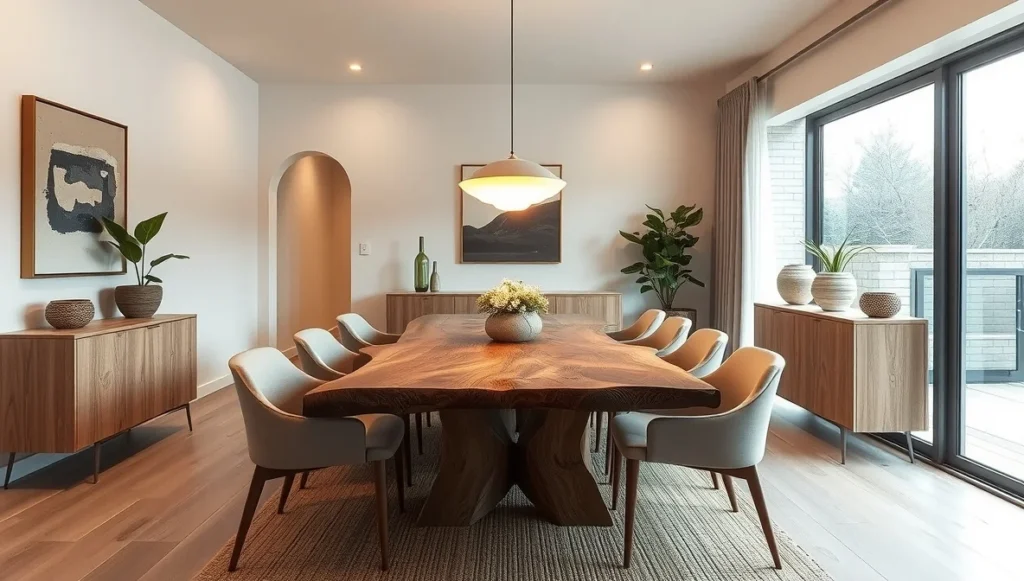
Color That Won’t Drive You Crazy
I’m so over the all-white everything trend. White walls, white furniture, white everything. It’s impossible to maintain, and honestly, it’s kind of boring. What I do now is start with a neutral that has some warmth to it. I’m obsessed with this one greige color that looks completely different throughout the day. In the morning light, it’s almost lavender. By evening, it’s warm and cozy. The clients in Phoenix where I used it said it was like having a completely different room depending on the time of day.
Then I add color through stuff you can change easily – throw pillows, art, plants, books. When you get tired of the blue pillows, you buy green ones. You don’t repaint your entire house. This approach keeps your space feeling fresh without requiring major renovations every few years.
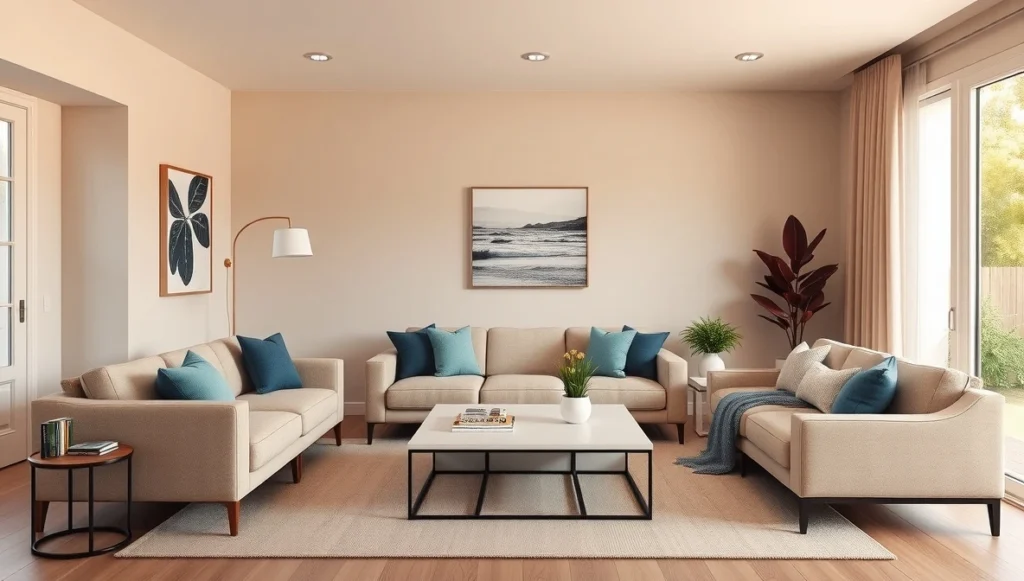
Materials That Don’t Lie
This might sound philosophical, but I think materials should be what they are. Wood should look like wood. Concrete should look like concrete. Don’t try to make your laminate flooring look like reclaimed barn wood, just get actual wood if that’s what you want. I’m doing this kitchen right now where we’re using these amazing walnut cabinets. The client’s first instinct was to stain them to match some Pinterest photo she’d saved. I talked her out of it because the natural grain is gorgeous, so why cover it up?
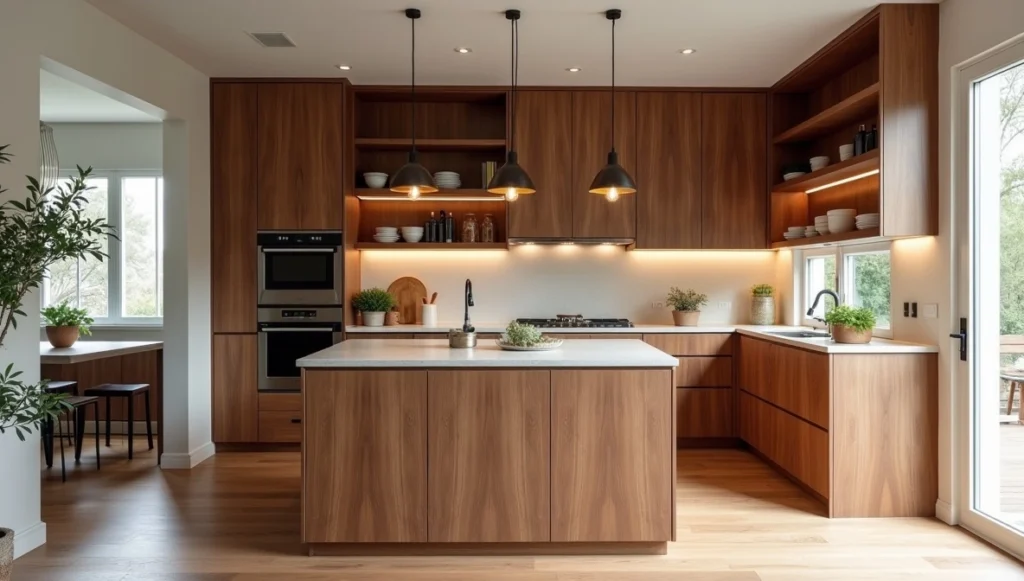
Sometimes the imperfections are what make it interesting. I used these reclaimed beams in a living room last year, with old nail holes and weathering. The contrast between those rough beams and the polished concrete floors was what made the whole space work. Authenticity in materials creates depth and character that fake finishes simply can’t replicate.
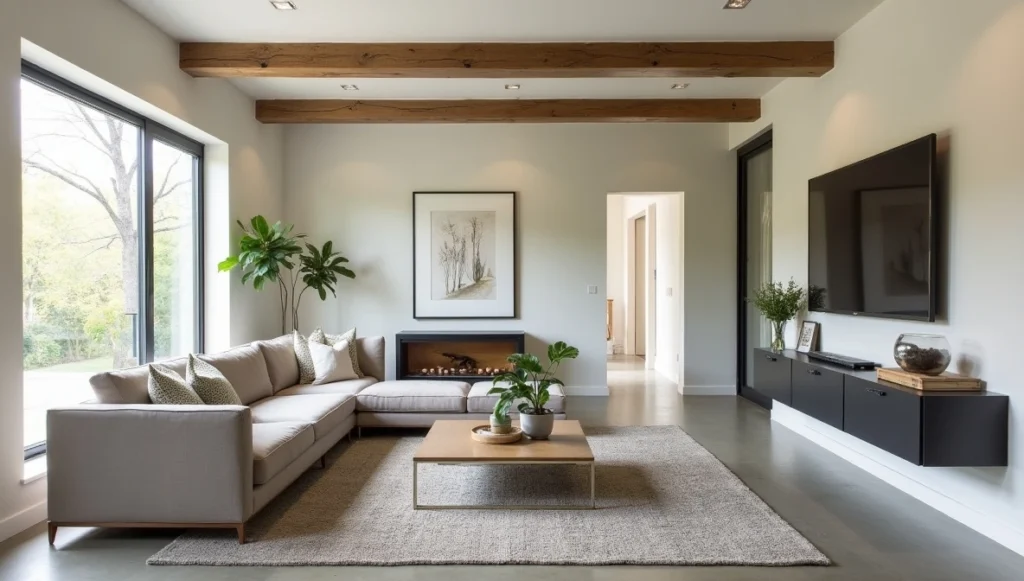
Let’s Talk About Actual Rooms Where People Live
Living Rooms That Aren’t Just for Show
Instagram has ruined living rooms. Everyone wants their space to look like those perfectly styled photos with the three books and the single orchid on the coffee table. But where do you put your laptop? Your coffee mug? Your kid’s homework? I just finished a family room for these clients with three kids under ten. They wanted contemporary style but needed it to survive daily life. We found this sectional that looks like expensive linen but is actually made from performance fabric. A toddler with a juice box is no match for this thing.
The coffee table was the real challenge. Everything I showed them had sharp corners or was made from glass. Finally, we found this round walnut piece with a thick top and sturdy base. The kids can bump into it all day long, and it just keeps looking better. Lighting was huge here too. We put in recessed lights for overall brightness, but added floor lamps and table lamps for when they’re watching movies or the kids are doing homework. Everything’s on dimmers because the same room needs to work for Saturday morning cartoons and dinner parties.
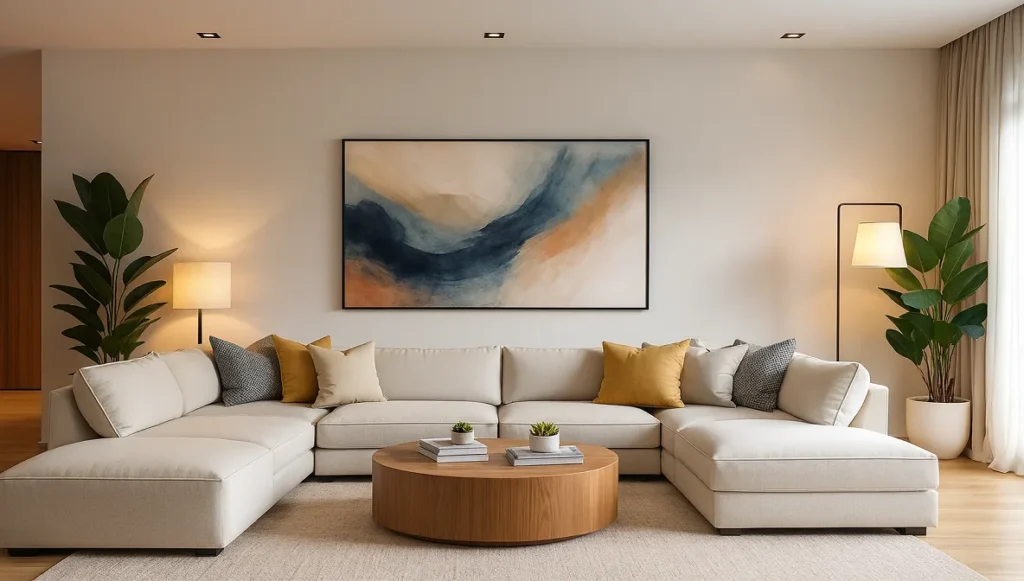
Bedrooms Where You Can Actually Sleep
Master bedrooms have become these elaborate stage sets that cost more than most people’s cars. I get why, its because we all want to feel like we’re staying at some luxury resort. But most mornings you’re just trying to find clean socks and get out the door. Platform beds are great for contemporary style, but make sure you can actually get in and out of bed without requiring a running start. I learned this lesson with a client who was recovering from knee surgery. The low profile bed looked amazing but was completely impractical for her situation.
I keep bedroom colors really simple now, usually just two neutrals plus one accent color. Right now I’m loving warm white walls with charcoal bedding and maybe some dusty blue or sage green in the pillows or throw. Built-in storage is the dream, but it’s not always in the budget. Even something simple like matching nightstands with drawers can make a huge difference in keeping the space from looking cluttered.
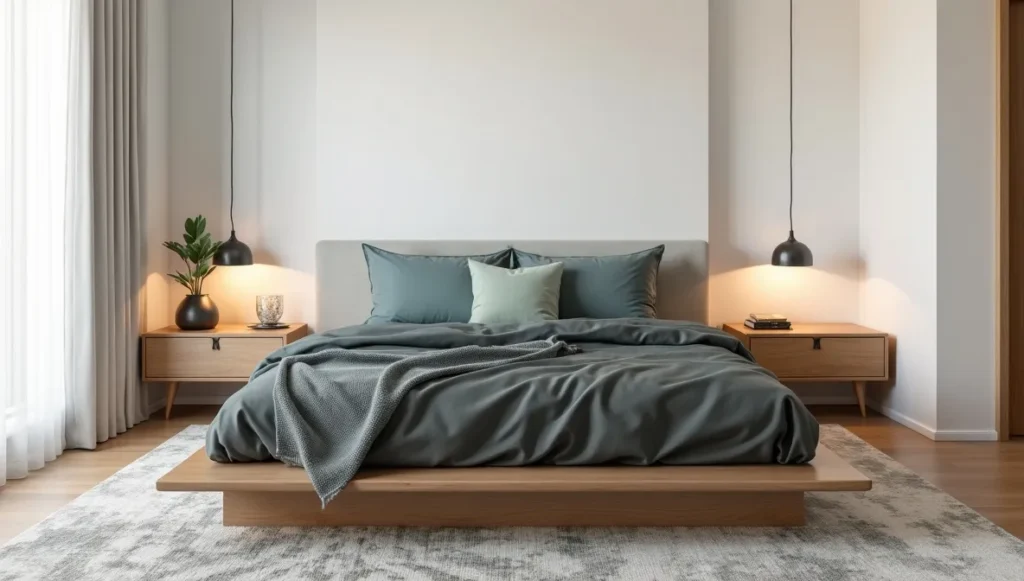
Kitchens for People Who Cook
Kitchen design has gotten completely out of hand. Everyone wants their kitchen to look like it belongs in some fancy restaurant, but then they can’t figure out where to store their cereal boxes. I always start with how my clients actually cook. Do they bake every weekend? They need counter space and storage for baking sheets. Do they meal prep on Sundays? They need containers and somewhere to put them.
I’m working on this renovation where we got rid of upper cabinets on one wall and did open shelving instead. It looks amazing, but it only works because these clients are neat freaks who enjoy arranging their dishes like a store display. For most people, it would be a disaster. The island is usually where I focus the most attention. It needs to be big enough to be useful but not so big that you’re walking around it all day. And please, put an outlet on it. People want to use their stand mixer and charge their phones, not just look at a pretty piece of stone.
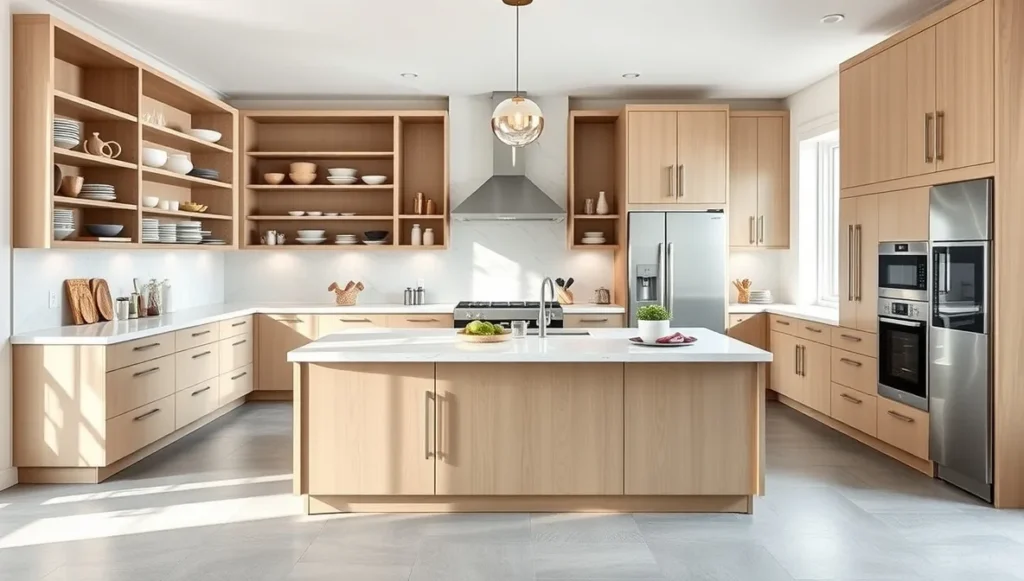
Bathrooms You Want to Use
Master bathrooms have become these elaborate spa fantasies with steam showers and soaking tubs that take twenty minutes to fill. Most of the time you’re just trying to brush your teeth and get ready for work. Large format tiles look great and minimize grout lines, but they’re expensive and heavy. Sometimes regular subway tile in a good color looks just as contemporary and costs half as much.
Floating vanities are everywhere right now, and they do make a space feel larger. But you lose storage, so plan accordingly. I always make sure there’s at least one deep drawer for hair tools and another one that’s divided up for smaller stuff. The lighting around the mirror is crucial. Those Hollywood-style bulb strips look cool but create terrible shadows. Side lighting or backlit mirrors are much more flattering and functional.
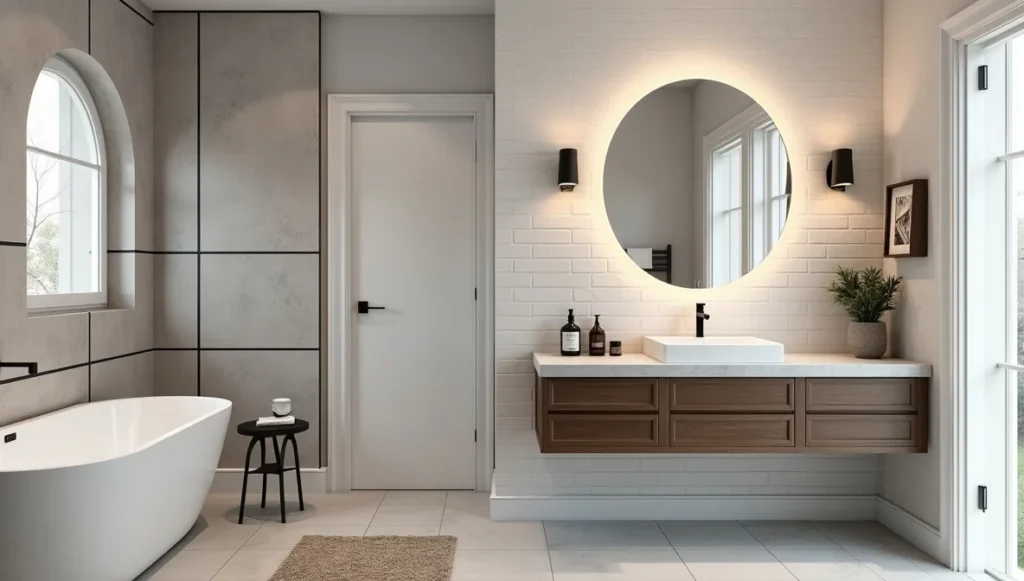
Dining Areas That Get Used
Unless you’re the type of family that actually uses a formal dining room, most people are better off with a dining area that’s connected to the kitchen or living room. The table has to be the right size – too small and it feels insignificant, too large and you can’t walk around it. I usually tell people to measure their space and subtract at least three feet on each side for chairs and walking space.
Chairs are where you can have fun. Mix wood and metal, or do upholstered seats with wood backs. Just make sure they’re all the same height so everything looks intentional. Lighting over the table should be about 30 inches above the surface. Any higher and it’s not functional. Any lower and tall people will hit their heads.
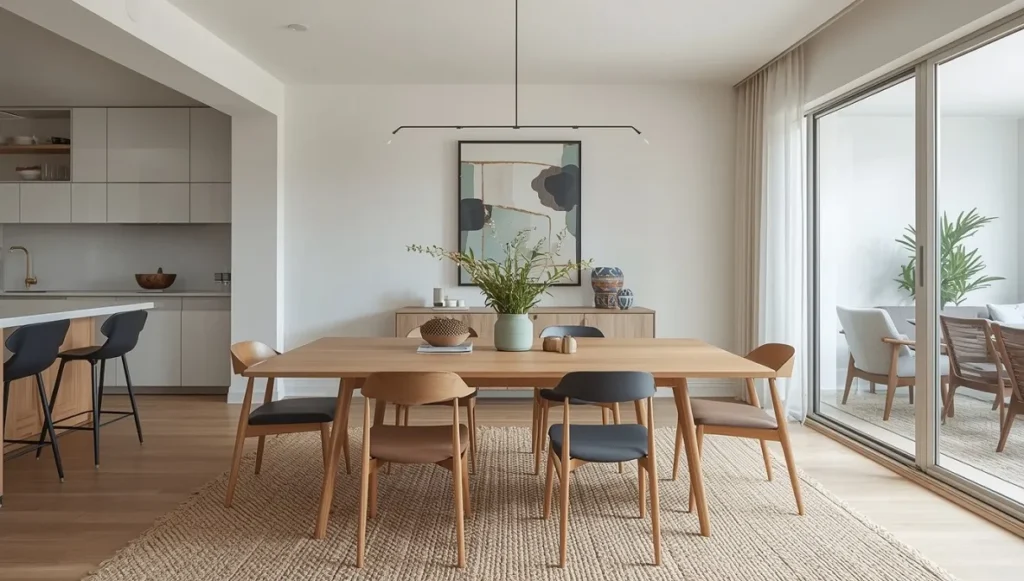
Home Office
The pandemic taught us all that working from home isn’t going anywhere, but most people are still trying to work from their kitchen table or the corner of their bedroom. A proper home office doesn’t need to be huge, but it does need to be intentional. I just finished a project where we converted a formal dining room that never got used into a dual workspace for a couple who both work remotely. The key was creating two distinct zones without making the room feel cramped.
Your chair and desk height matter more than you think. I see people spending thousands on a beautiful desk and then pairing it with some random chair from their dining set. Your back will hate you. Invest in proper ergonomics first, style second. That said, there are plenty of good-looking office chairs that won’t destroy your spine or your design aesthetic.
Storage is crucial but it doesn’t have to be boring. Built-ins are ideal but expensive. I’ve had great success with floating shelves and stylish filing cabinets that double as side tables. The goal is to keep all your work stuff contained so you can actually shut down at the end of the day. Nothing ruins work-life balance like having spreadsheets scattered across your dining table.
Lighting is where I see the biggest mistakes. Overhead lighting alone will give you headaches and create shadows on your computer screen. You need task lighting for your workspace and ambient lighting for video calls. A good desk lamp plus some background lighting makes you look professional on Zoom instead of like you’re calling from a cave.
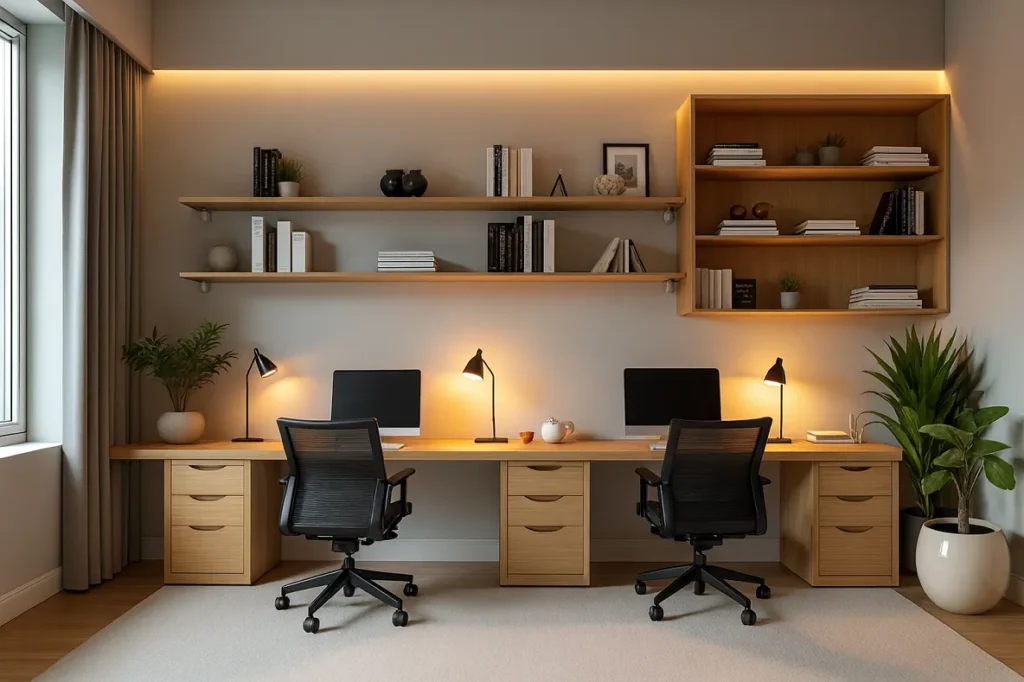
The Mistakes I Keep Seeing
Buying Everything at Target
I get it – budget is real. But buying everything from the same store makes your space look like a showroom, not a home. Mix high and low. Splurge on the sofa, save on the side tables. Buy vintage pieces on Facebook Marketplace. Borrow your grandmother’s lamp. I had these clients who bought their entire living room from one store in one day. It looked fine, but it had no personality. We kept the major pieces but swapped out accessories, added some vintage finds, and brought in plants. Suddenly it felt like a real home instead of a catalog page.
Ignoring Your Actual Life
This is the big one. People design for the life they think they should have instead of the life they actually have. You don’t read books in your living room? Don’t put a bookshelf there just because it looks good. You eat breakfast standing up at the counter? Design for that instead of pretending you’re going to start having leisurely sit-down meals. I worked with this couple who insisted they needed a formal dining room because that’s what grown-ups have. Six months later, they were eating every meal at the kitchen island and using the dining room to fold laundry. We ended up turning it into a home office, and they’re much happier.
Following Pinterest Too Hard
Pinterest is great for ideas, but remember those photos are styled by professionals with unlimited budgets and no actual life happening in the space. That coffee table with nothing but three books and a candle? Where do you put your laptop when you want to work from the couch? Design for real life, not for your Instagram feed.
What to Spend Money On (And What to Skip)
This is the question everyone asks me, and the answer depends on your situation. But here are some general rules I follow: Spend money on anything you use every day. Your sofa, your bed, your desk chair if you work from home. These pieces need to be comfortable and well-made because you’ll be living with them for years.
You can save money on accessories and pieces that don’t get heavy use. That decorative bowl on your dining table doesn’t need to cost $200. Side tables, lamps, picture frames – these are places where you can find good-looking options without spending a fortune. Quality over quantity, always. I’d rather have clients buy one great piece and save up for the next one than fill their space with mediocre furniture that they’ll want to replace in two years.
Why This Style Actually Works
After doing this for twenty years, I keep coming back to contemporary design because it’s flexible. The bones of a well-designed contemporary space can adapt as your life changes. Take this house I did in Chicago in 2016. When I designed it, it was for a couple in their thirties with no kids. Since then, they’ve had two babies, went through a period where they both worked from home, moved offices twice, and are now thinking about getting a dog. The basic structure of the design still works because we focused on flexibility and function rather than following some rigid style rules.
Good contemporary design creates a framework that grows with you instead of boxing you in. It’s not about having the trendiest furniture or following every design blogger on Instagram. It’s about creating spaces that work for your actual life. The projects I’m most proud of aren’t the ones that got published in magazines. They’re the ones where families tell me, five years later, that they still love coming home every day.
